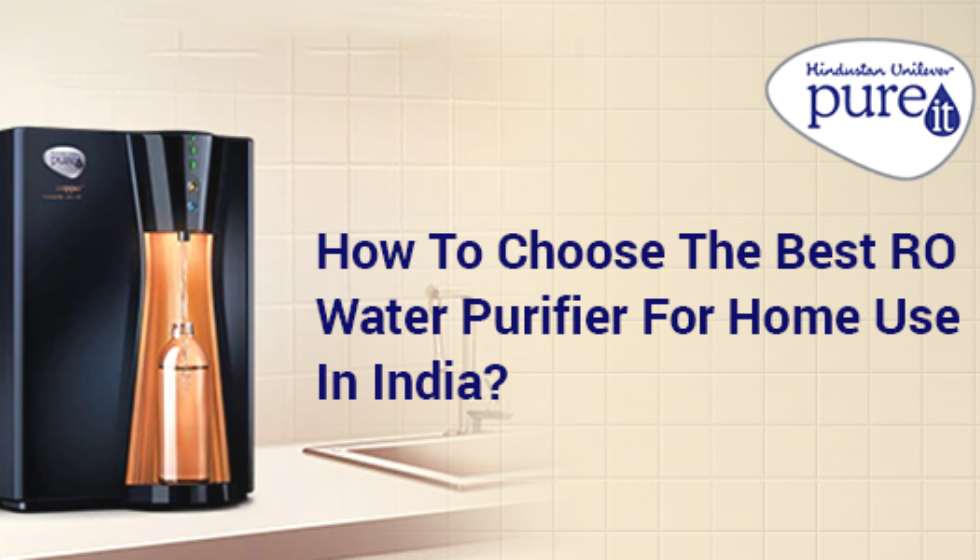RO, short for Reverse Osmosis, has become synonymous with water purification in recent years. With increasing environmental degradation, access to clean and pure drinking water continues to be a luxury for the average Indian. Technology has flooded the market in the form of water purifiers of every stripe. Researching how to purchase an RO purifier is akin to searching for a needle in a haystack. Terminology like RO, UV, UF, and MF have become household names, while experts on the technology and process are a dime a dozen. So, if you are researching for this all too important appliance for home use, you have reached the right place!
Let’s explore what to look for in a typical RO unit before you make your decision; not only will it ensure that you have made the best choice, but it also equips you with things you probably didn’t know about.
RO Purification technology
If you have chanced upon UV, UF, and MF, you are well on your way to understanding the purification technologies.
For the uninitiated, UV is short for Ultraviolet purification, which uses a high-quality UV lamp to deactivate the microbes present in water by attacking the nucleic core of these organisms. However, UV does not work well when the turbidity of water is high, so water is subject to the prefiltration process. Also, UV by itself is ineffective in the removal or the filtration of the microbial debris.
RO is short for Reverse Osmosis, which uses a semi-permeable membrane whose pore diameter is in the order of microns to filter out particles more significant than the pore size. It is different from a regular filtering membrane because it works on the principle of reverse osmosis of the solvent, which works in reverse to the naturally occurring phenomenon of osmosis. RO is ideal if your Total Dissolved Solids (TDS) quotient is more significant than 500 ppm, and though it removes more than 95% of TDS, it does not kill all bacterial and viruses. This is where using a UV module in conjunction with RO would help.
Microfiltration is a physical filtration process where a contaminated fluid is passed through a special pore-sized membrane to separate microorganisms and suspended particles from process liquid. It is commonly used in conjunction with various other separation processes such as ultrafiltration and reverse osmosis to provide a product stream that is free of undesired contaminants.
Water purifiers come with RO+UV or RO+MF or RO+MF+UV and employ 6-stage or 7-stage RO purification. Depending on the hardness quotient of the water in your water supply, you must choose whichever variant best suits your requirements.
Advanced features
These features are often dismissed as bells and whistles for your appliance, but they can make its usage that much simpler over time. For instance, the digital purity indicator shows the purity levels of water throughout the day. Similarly, they are fitted with LED indicators to warn you about changing the filter fifteen days later. The Auto shut off feature turns off the water supply through the purifier if something is amiss and ensures that you don’t consume impure water.
Water-saving technology
It is well known that RO purifiers waste a lot of water. While technology is still keeping pace, brands like Pureit have made it more eco-friendly. For instance, with the help of their trademarked Eco Recovery technology, they ensure that the purifier saves 60% more water than its counterparts in the industry.
Storage Capacity
If the place you live in experiences frequent power outages, it might seem like gravity-based cleaners are the best. But they are not effective when your TDS is above 500 ppm. Fortunately, we have a solution for that. Get yourself a purifier of the most significant capacity so that even there are water or power fluctuations in your area, you have enough pure water to last you for a while.
Also, make sure that you buy a water purifier based on how big your family is.
- For 2-4 members, we recommend a water purifier with a storage capacity of 5-8 litres
- For 4-6 members, we recommend a water purifier with a storage capacity of 8-10 litres
- For over 6 members, we recommend a water purifier with a storage capacity of nothing less than 10 litres
RO along with mineral enrichment
RO eliminates more than 95% of the Total Dissolved Solids, which means it stops even the good minerals that your body requires in trace quantities. One way to ensure that the water is enriched with the goodness of minerals is by going for a product with a Copper cartridge or Calcium and Magnesium cartridge.
Alternatively, look for an RO water purifier with a TDS modulator that allows you to modulate the amount of TDS purified by the appliance. It also depends on the TDS level of your water supply.
We recommend that you browse RO-related pages on premium water purifier brands like Pureit, which are authorities on the topic.

